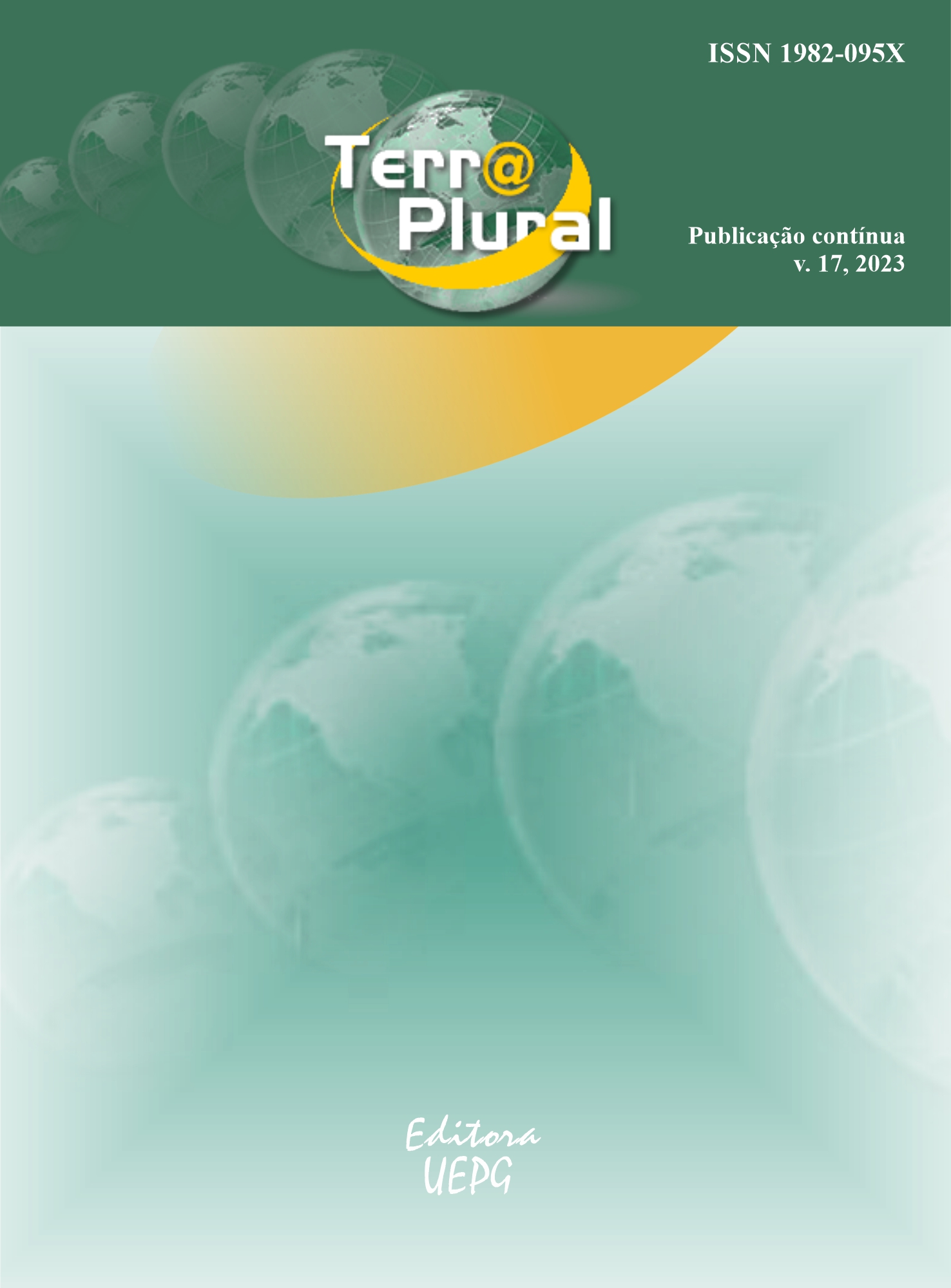Estructura y composición de las fisionomías de pastizales septentrionales del sur de Brasil
DOI:
https://doi.org/10.5212/TerraPlural.v.17.2322248.014Palabras clave:
fitosociología, pastizal seco, pastizal rocoso, pastizal húmedo, Campos Gerais del Paraná, Parque Estatal GuarteláResumen
Con el objetivo de contribuir a la comprensión de los pastizales naturales en la meseta sur de Brasil, se realizó un levantamiento florístico y estructural en comunidades de la parte norte de la región fitogeográfica Campos Gerais de Paraná, caracterizado por un clima de transición entre templado y subtropical. El estudio se realizó en tres fisonomías de pastizales naturales encontradas en el Parque Estatal Guartelá (Tibagi, PR, Brasil - 24º39’10” S y 50º15’25” O), con la distribución de 90 cuadrados de 1 m2: 30 en el pastizal seco (CS), 30 en pastizal rocosos (CR) y 30 en un pastizal húmedo (CU). Se encontraron un total de 128 especies y 28 familias, con ocurrencia de 66 especies en CS, 55 en CR y 64 en CU. A pesar del mayor número de especies en CS, no se observaron diferencias significativas en riqueza y diversidad entre los pastizales. La mayor riqueza de especies muestreadas fueron Asteraceae (28 especies), Poaceae (24), Melastomataceae (13) y Cyperaceae (11), un patrón común en las áreas de pastizales de los biomas Mata Atlântica y Cerrado. Pocas especies tuvieron alta frecuencia y cobertura en las comunidades, especialmente gramíneas, intercaladas con un alto número de espécies de baja frecuencia y biomasa. Además, se observó una marcada zonificación de la vegetación por las variaciones edáficas, ya que la mayor similitud se presentó entre CS y CR (54,54 %) y la disimilitud entre CR y CU (21,84 %). A pesar de eso, 10% de las especies se encontraron en común para CS, CU y CR, tasa superior a la encontrada en estudios en la región. Las diferencias florísticas y estructurales en las comunidades locales y regionales refuerzan la necesidad de más estudios en las mesetas del sur de Brasil para una comprensión más detallada de los pastizales naturales, ya que su complejidad es poco conocida y la fuerte presión antrópica ha reducido considerablemente su área de ocurrencia.
Descargas
Descargas
Publicado
Cómo citar
Número
Sección
Licencia
Derechos de autor 2023 Anna Luiza Pereira Andrade, Marco Antonio de Assis, Marta Regina Barrotto do Carmo

Esta obra está bajo una licencia internacional Creative Commons Atribución-NoComercial-SinDerivadas 4.0.
La revista Terr@ Plural retendrá el copyright de los trabajos publicados. Los derechos tienen referencia con la publicación del trabajo en cualquier parte del mundo, incluyendo los derechos a Las renovaciones, expansiones y diseminaciones de la contribución, así como otros derechos subsidiarios. Los autores tienen permiso para la publicación de la contribución en otra medio, materia impresa o digital, en portugués o en otra traducción, desde que los créditos tenidos sean dados a la Revista Terr@ Plural. Si permite el autoarchivo de los artículos publicados, en repositorios institucionales, temáticos o páginas webs personales en la versión pdf bajada del site de la revista.















